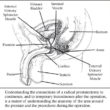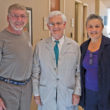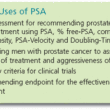Early prostate cancer, risk of recurrence, and the role of risk stratification

©Sanford Radom, MD
In cancer treatment, adjuvant therapy plays a crucial role in reducing the chances of cancer recurrence and, in some cases, improving the odds of a cure. Over the past decade, various studies have examined the use of adjuvant therapy for localized prostate cancer, aiming to decrease the risk of the cancer coming back or spreading.
One such trial focused on combining radiation therapy and six months of androgen deprivation therapy (ADT) with chemotherapy, with or without docetaxel, for patients with nonmetastatic unfavorable risk prostate cancer. This study did not find any added benefit from using docetaxel.
A post-hoc analysis of data from this trial has shed light on the factors linked to a shorter time to PSA failure, defined as the time from randomization to the earliest date of biochemical recurrence or the start of salvage therapies. This retrospective analysis allowed for a better understanding of the risk of PSA failure by considering various factors and accounting for non-prostate cancer-related deaths.
The findings of this study highlight factors such as a baseline PSA level of 10 ng/mL or greater, a Gleason score of 8 to 10, and younger age are associated with a quicker time to PSA failure. These three factors were combined to create a high-risk category, which had a significantly higher risk of PSA failure and a 44% risk of PSA failure within three years. Additionally, patients who received pelvic radiation therapy at the discretion of their treating physicians had a reduced risk of relapse, cutting their risk in half.
This study contributes valuable insights to our understanding of factors that affect cancer recurrence after local therapy. It underscores the importance of considering age in predicting the risk of PSA failure, especially since younger patients tend to have longer survival and more time for a recurrence to happen.
In the context of prostate cancer treatment, this study suggests that a patient’s age, along with measures of fitness and the presence of other health conditions, are crucial factors when assessing the risk of PSA failure and survival. To make the best decisions regarding the intensity, type, and duration of treatment, it’s important to consider both the patient’s overall health and the specific characteristics of their cancer. This study encourages the consideration of high-risk patients for clinical trials and recommends extended-duration ADT and treatments like abiraterone for these individuals. However, it is essential to be mindful of the potential side effects of such treatments, especially in older patients with other health issues. Ideally, modern risk assessment for early prostate cancer should consider various factors, such as the cancer’s biology, genomic features, patient fitness, and comorbid conditions, to make the most appropriate treatment choices.
JAMA Netw Open. 2023;6(10):e2337111. doi:10.1001/jamanetworkopen.2023.37111





















